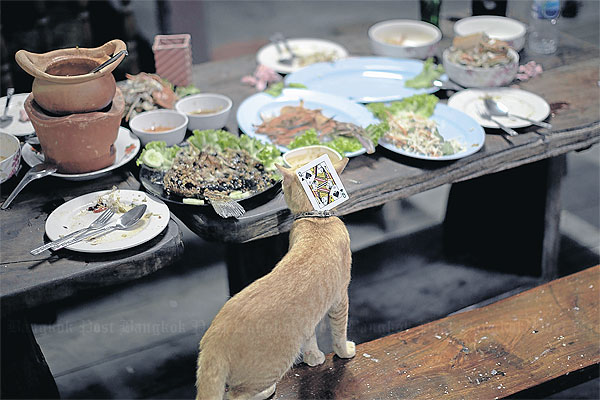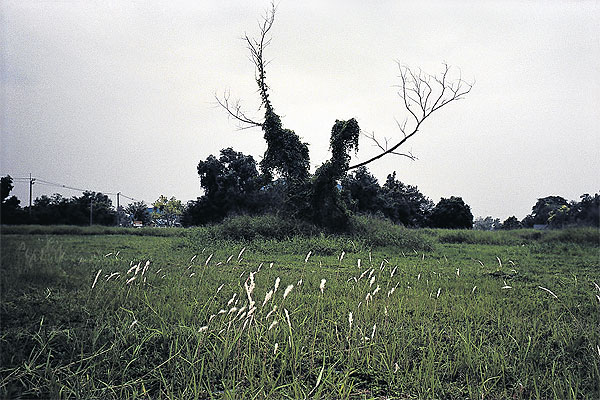The challenge for artists to create new or innovative images about contemporary Thailand is the challenge of responding to the fact that this country lacks a singularly dominant, or characteristic, image to react against.

A photo by Soopakorn Srisakul.
In fact, this challenge may prove itself to be an impossibility because the contrasts here are so severe. Among any number of examples, we can think about the beach idylls of the South and the agrarian landscapes of the East; or move from the architectural anonymity of our cities to the diverse heritages of religious sites. Moreover, the traditional stereotype of Thailand as a place of sacred experience and sensual excess points to extreme ends of a spectrum, where anything and everything can exist in-between.
In respect to this, it is notable that some of the more interesting Thai artists either engage a certain sensibility (e.g. Apichatpong Weerasethakul's animist landscapes) or play with the meanings of vernacular form (e.g. Jakkai Siributr's use of the pattern of the Thai yantra).
"Inhabitation" is not an exhibition "about" Thailand, but the works of the five photographers on show are testament to the difficulties of heightening a sense of place when aspects of this country are framed. Or, the photographs on show map how anonymity or indifference defines the locales that many of us are already familiar with. This is not a criticism of the exhibition _ which aims to explore intimate relationships to place and space and the consequent transformation of such sites _ but an acknowledgment of what it means to de-familiarise the familiar and vice-versa.
In regard to the fact that all these photographs were taken in Thailand, we can wonder about how we recognise what is essentially at stake _ what new insight or knowledge is produced, and how?
Of striking interest with "Inhabitation" is the diverse background of the artists included and what this brings to bear on the individual photographs. Rasiguet Sookkarn trained as an architect and works as an art director in film, Withit Chanthamarit has a background in documentary film and photography, and Soopakorn Srisakul is an editorial photographer, while Dhanainun Dhanarachwattana, the curator, divides him time between making art and writing about art and Tawatchai Pattanaporn is a professional photographer.
The modes of the different photographs range from the cinematic to the artfully documentarian to the hard-edged and clean. Withit captures moody interior scenes; Soopakorn's works are variable but include portraits of transgenders; Rasiguet's stagey shots of urban Bangkok recall the muted theatricality of Philip Lorca DiCorcia; Tawatchai's photographs are a sort of tribute to rural workers and products; and Dhanainun has created an installation that evokes personal space and memory.
Photography doesn't exist in a vacuum. It resounds and resonates with all other forms of representation, from the literary to the televisual. The challenge of this exhibition is to unpick how any of us make individual sense of the environments we inhabit, or move through daily, and the limits and possibilities of photography in this respect, as a medium.
"Inhabitation" continues at Speedy Grandma until Dec 20. Visit www.speedygrandma.com

A photo by Dhanainun Dhanarachwattana

